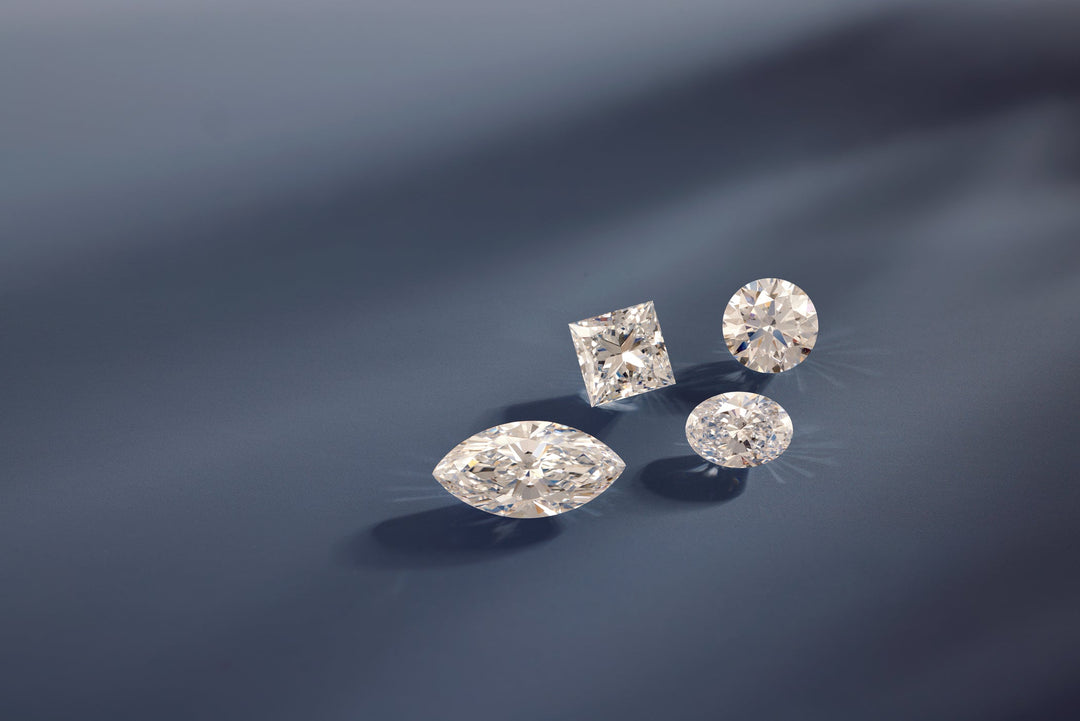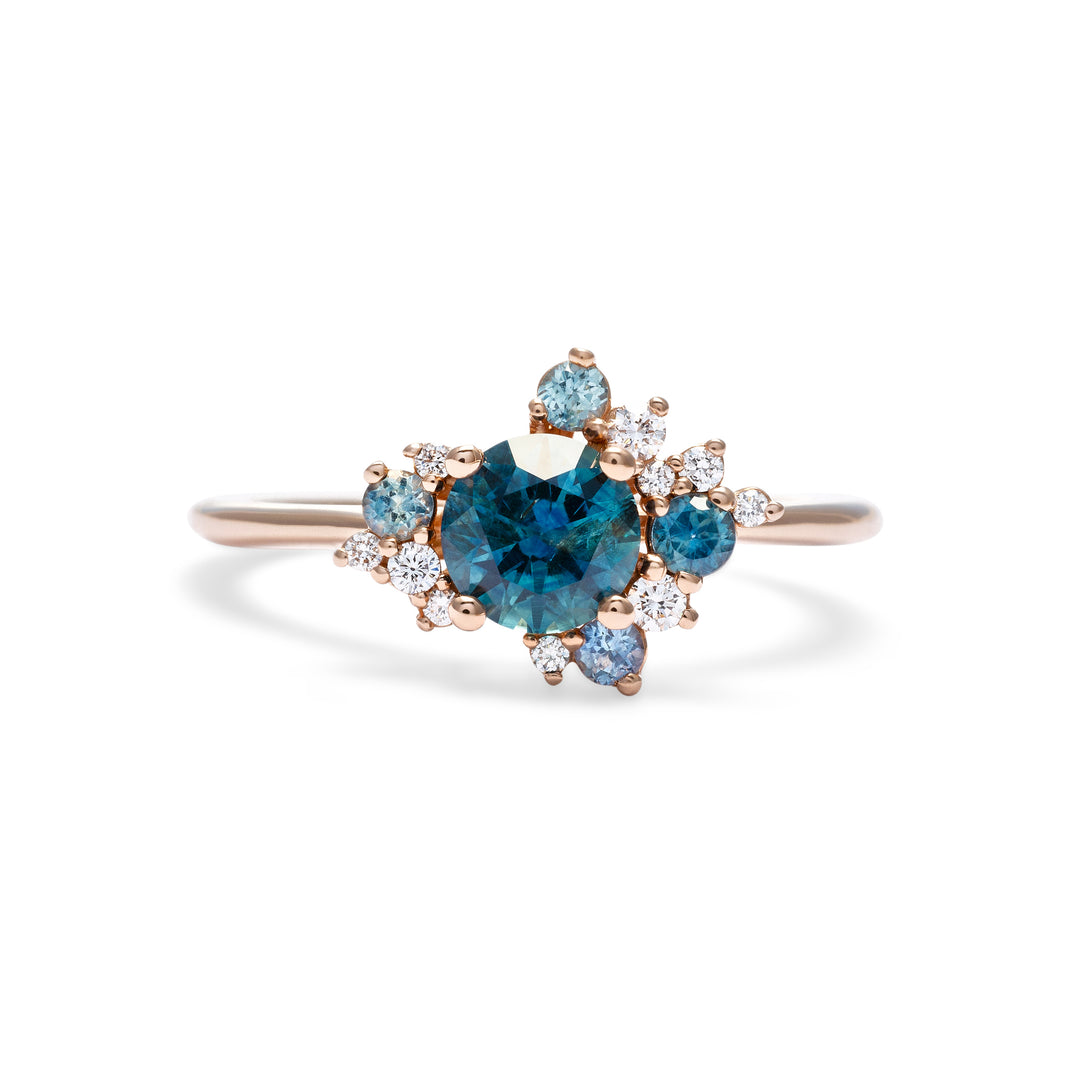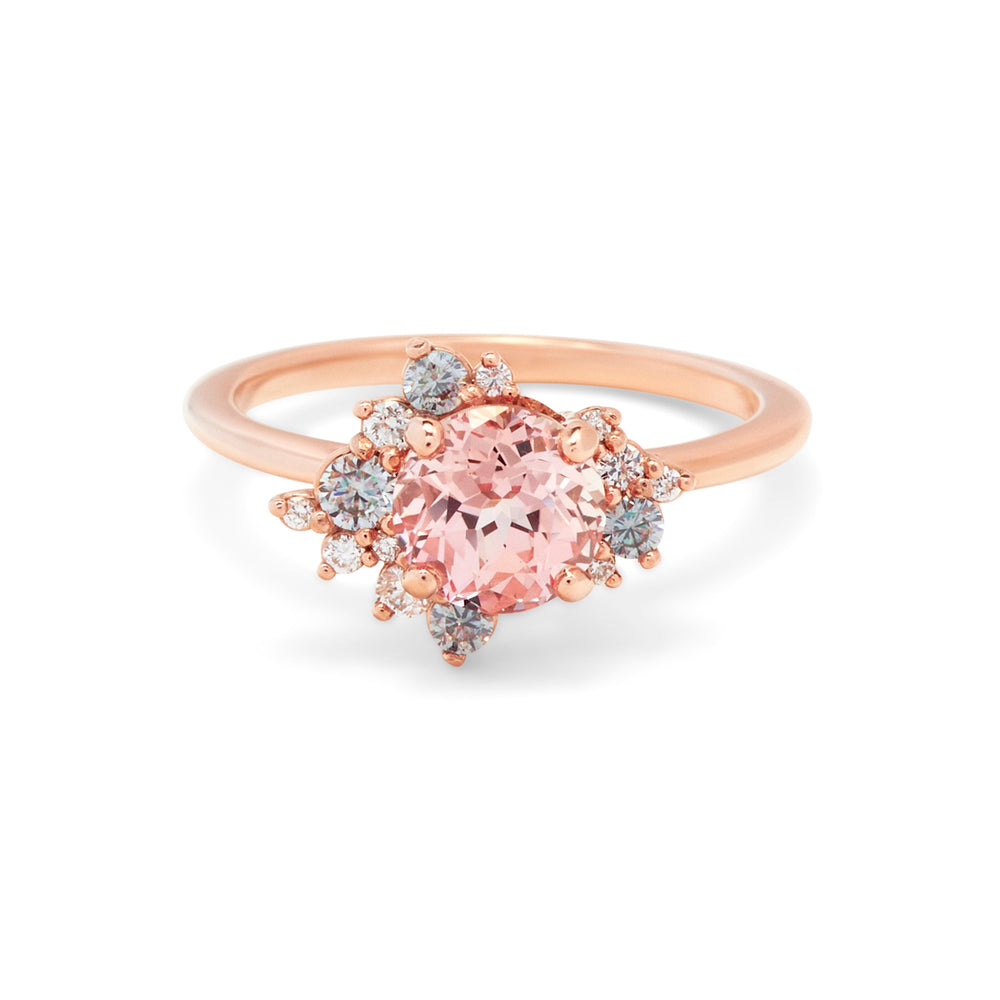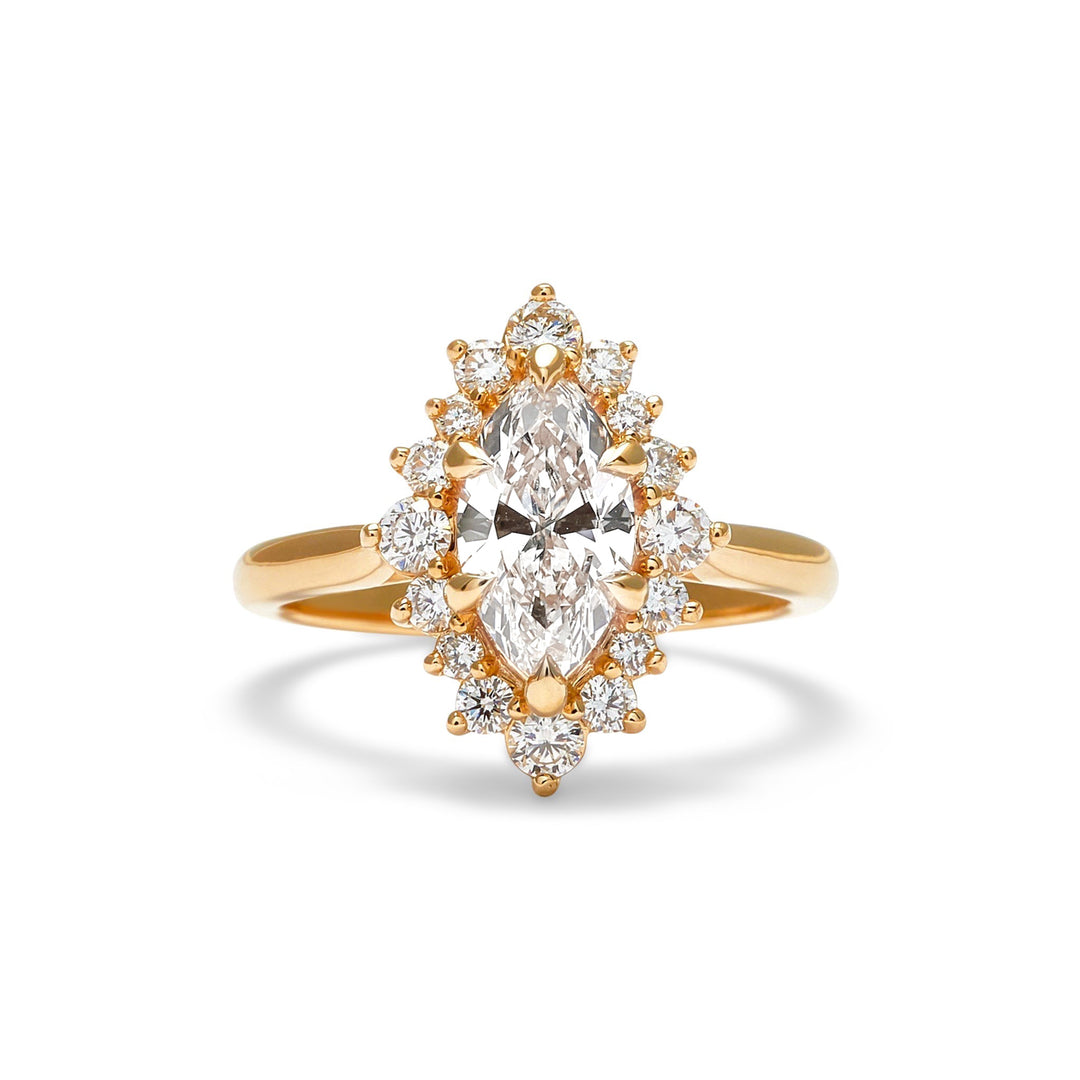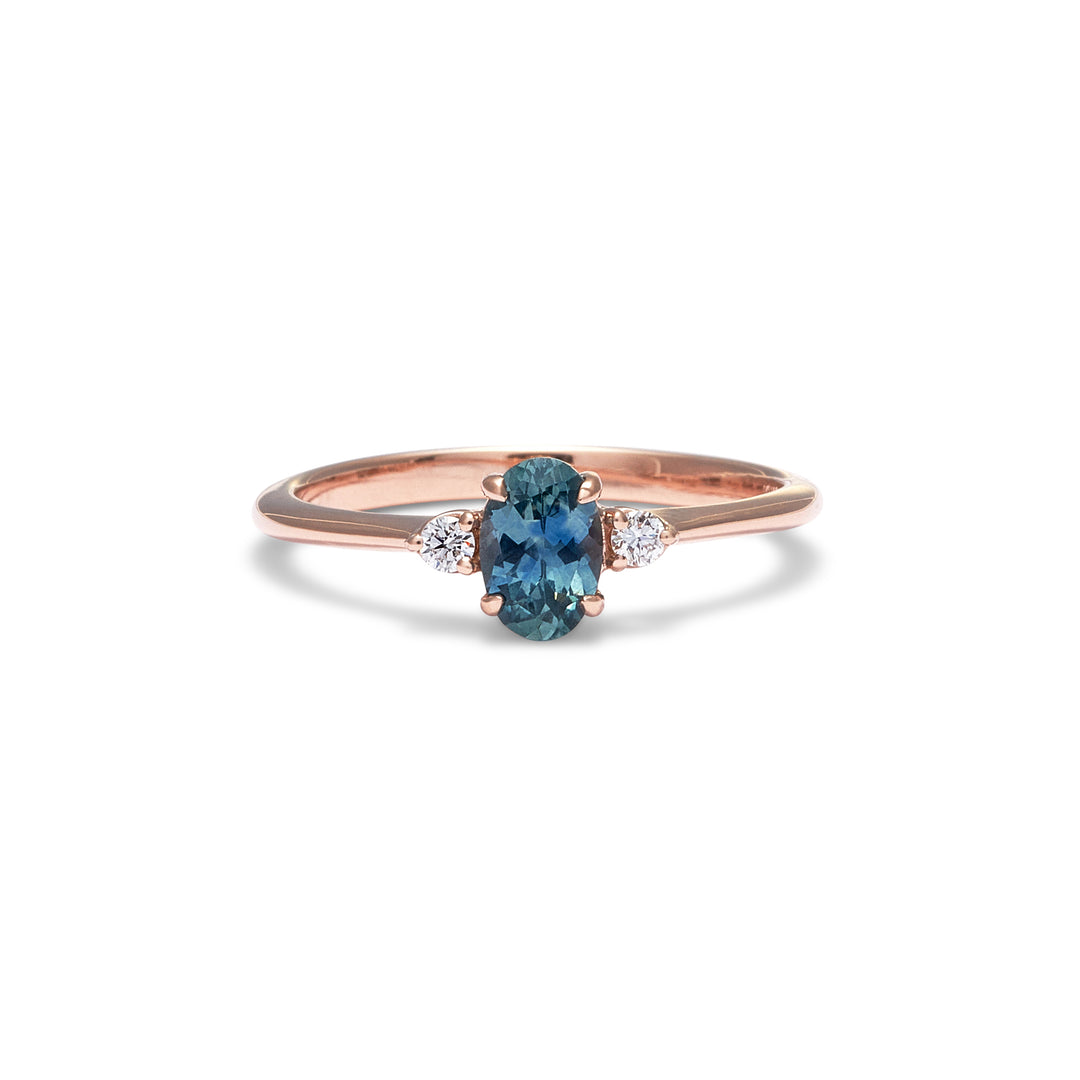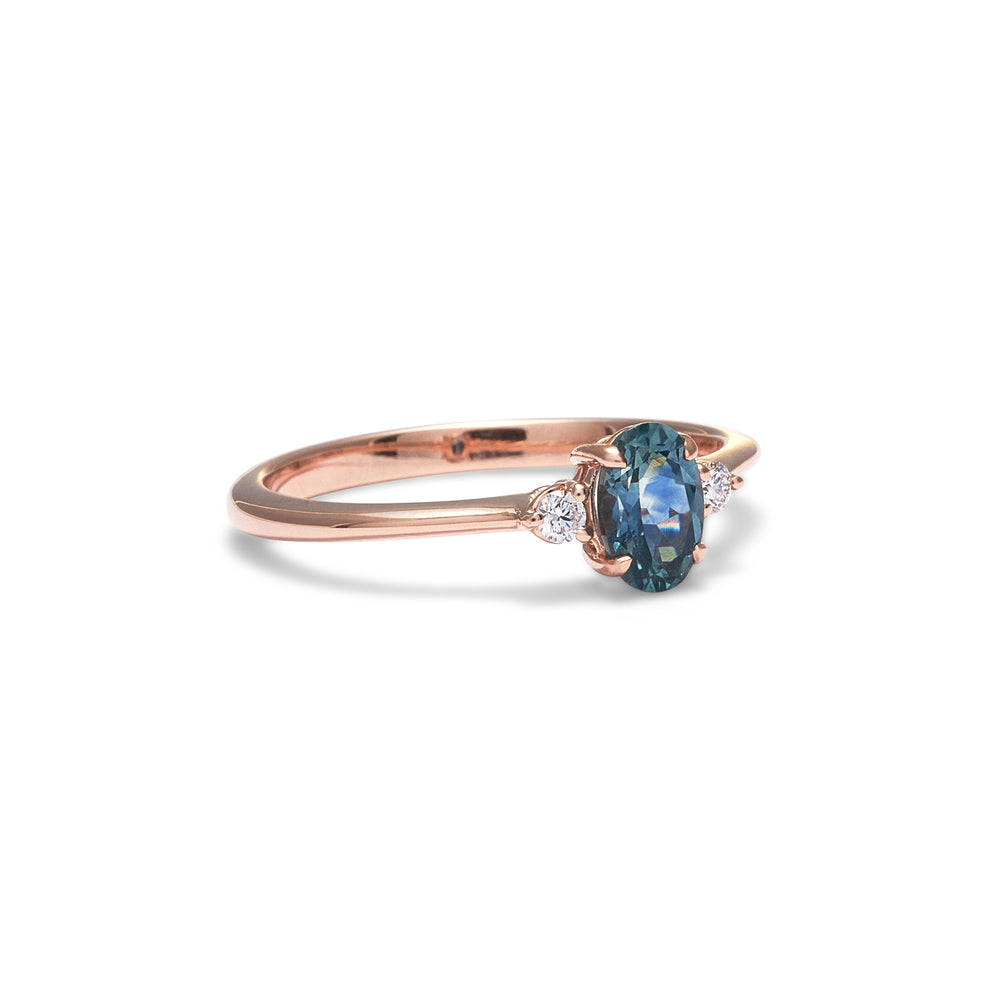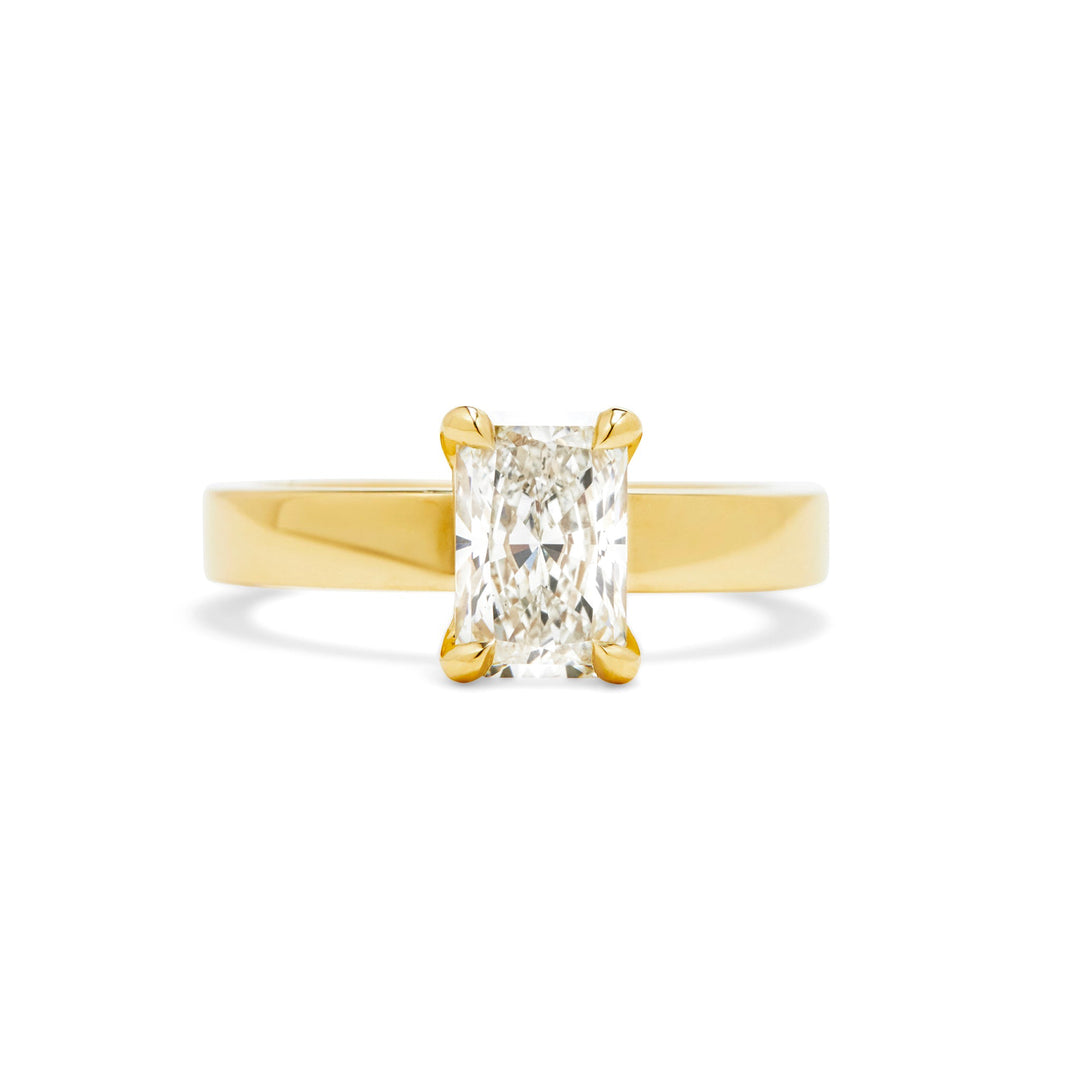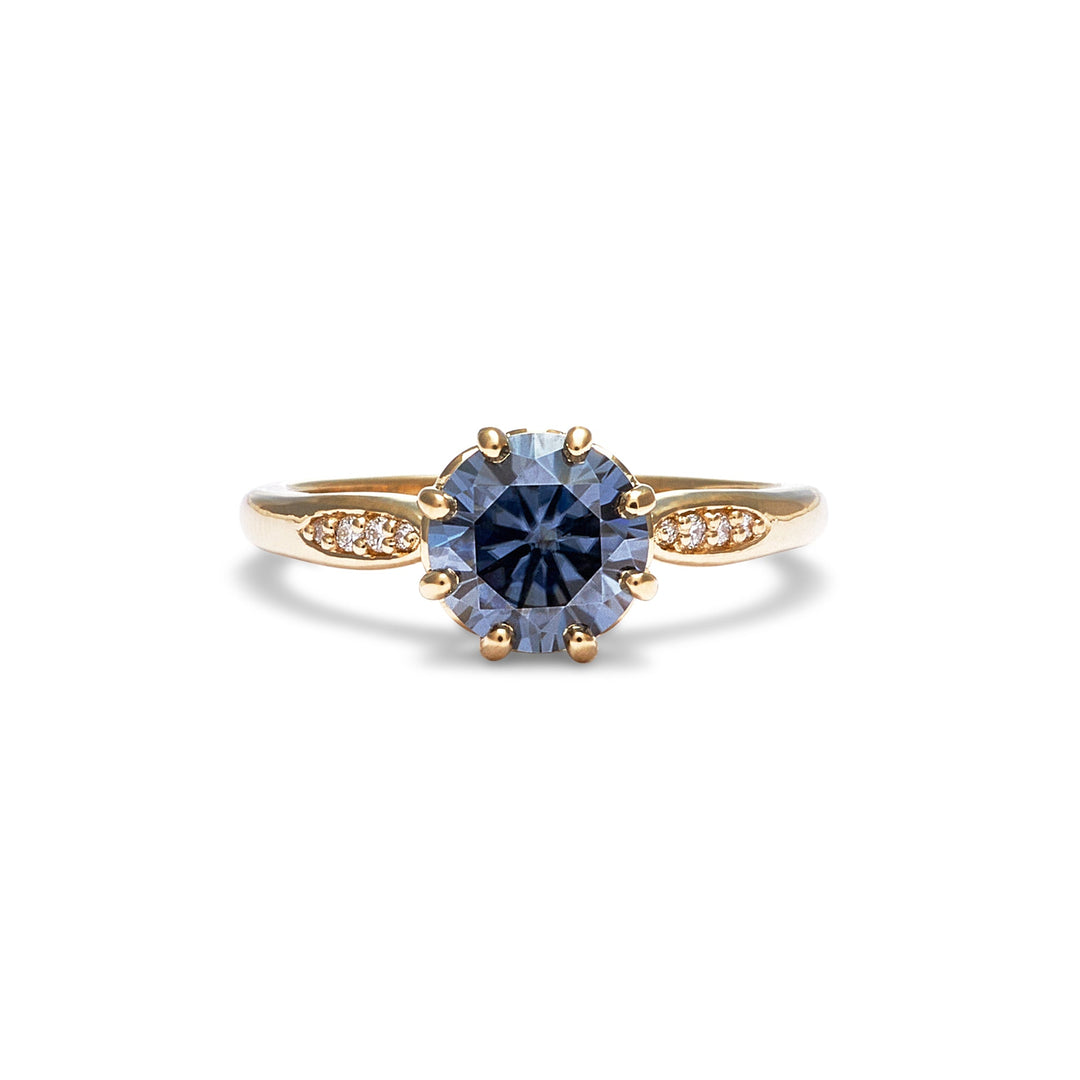Let's get technical: Diamond Information
How are lab grown diamonds actually created?
As you have learned in our Ethical Diamonds post, laboratory grown diamonds (also known as lab-created diamond or man-made diamond) are genuine diamonds!
Certain gemstones are known as diamond simulants, such as cubic zirconia and moissanite. Those gems do not share the same physical and chemical properties as diamonds, and are merely lookalikes.
Lab grown diamonds have the same sparkle, the exact same optical, chemical and physical properties, and are made of the same material as mined diamonds: carbon. They are indistinguishable from natural diamonds, even under magnification. Their hardness and thermal conductibility is identical, and certain would even argue that lab grown diamonds are superior to mined diamonds because of their general lack of large inclusions and impurities.
The only difference lies in the origin: they are diamonds produced in a highly controlled laboratory environment, as opposed to their natural counterparts which are the result of geological processes.
The methods
There are two different methods to grow diamonds in a laboratory: the High-Pressure High-Temperature (HPHT) method, and the Chemical Vapor Deposition (CVD) method. The methods are different, but in both instances, a small diamond seed is placed in a highly controlled chamber where the diamond grows, atom by atom, recreating and accelerating the natural growth process.
The early days
Historically, lab grown diamonds have been produced with the HPHT method since the 1950’s. Up until recently, those HPHT diamonds were exclusively used in industrial and electronic applications, as most lacked clarity or size and had an undesirable yellowish or brownish hue that made them unsuitable for jewelry.
Technology advances
About a decade ago, CVD diamonds began to appear in the gem diamond market. CVD was then more suitable for manufacturing higher quality diamonds because the process allows a better control over the chemical properties and the growth process.
Since then, both the HPHT and CVD methods have been getting more and more refined, and record breaking diamonds in size and quality make the industry headlines on a regular basis:
- In 2013, Gemesis grew in Florida a stone with a finished weight of 1.29ct;
- In 2014, a 3.04ct diamond grown in Singapore was unveiled by Pure Grown Diamond;
- In 2015, a company out of Russia grew a 32.26ct man-made rough that was fashioned into a 10.02ct finished emerald cut diamond.
Lab-Grown vs. Mined Diamonds: Independent Impact study
How are lab-grown diamonds more sustainable than mined diamonds? This is a very legitimate question.
The consulting firm Frost & Sullivan conducted an thorough analysis on the question. The results are unequivocal: the difference in impact of mined and grown diamonds is enormous. As mentioned on their website: "New analysis from Frost & Sullivan, Environmental Impact Analysis – Production of Rough Diamonds based on a study comparing the environmental impact of grown diamonds and mined diamonds, depicts that growing diamonds cause significantly less environmental impact as compared to mining diamonds. There are several aspects of environmental impact such as air pollution, water usage, energy usage, etc. There is also a significant level of human impact as well in the process of diamond production. This report quantifies and compares each of these aspects for grown and mined diamonds per carat of diamond produced. "
The table below summarizes the different comparative aspects from the study:

The full report can be downloaded on Frost & Sullivan's website by clicking here.
Lab-Grown Diamond versus Mined Diamond Price
The price of mined diamonds has been subjected to lengthy debates for decades now. It was once highly controlled by a single monopoly (DeBeers) who controlled the rough diamond supply entering the market. Simply put, they increased prices by holding diamonds and limiting offer until demand called for higher market prices, and then released diamonds into the market only when needed, thus maintaining a high demand and steadily raising prices. Although the diamond world is changing now, the market is still unpredictable at best, and slumps and peaks are constantly being witnessed (and often without a clear cause).
The cost of lab-grown diamond is relatively stable since its making is controlled, and the cost of making is predictable. And since they don’t require millions of dollars of "gambled" investment in mining ventures in far away lands, the price of lab grown diamonds is generally lower. As a result, white diamonds are on average 10 to 30% less in price, while colored diamonds can be up to 80% more affordable than their mined counterparts!
Disclosure
Although they bear the same visual, physical and chemical properties as naturally occurring diamonds, readily available tools exist to distinguish the two by spectroscopy. Reputable grading laboratories like GIA are fully equipped with the finest technology and are able to differentiate lab grown diamonds for mined ones through advanced testings.
Moreover, makers of lab created diamonds generally commit to full disclosure, and a laser etched lettering (such as “LG” for laboratory grown, or "Laboratory Grown in the USA") is permanently inscribed on the girdle of the diamond, making it identifiable with a simple inspection from your jeweler.
Other Lab Grown Gemstones
Identity Diamonds also carries an array of loose lab-grown gemstones such as emerald, sapphire, ruby, moissanite, alexandrite, and much more. Those gemstones are also grown in a highly controlled laboratory environment and meet with our standards of high quality, conflict-free, sustainable practices.



